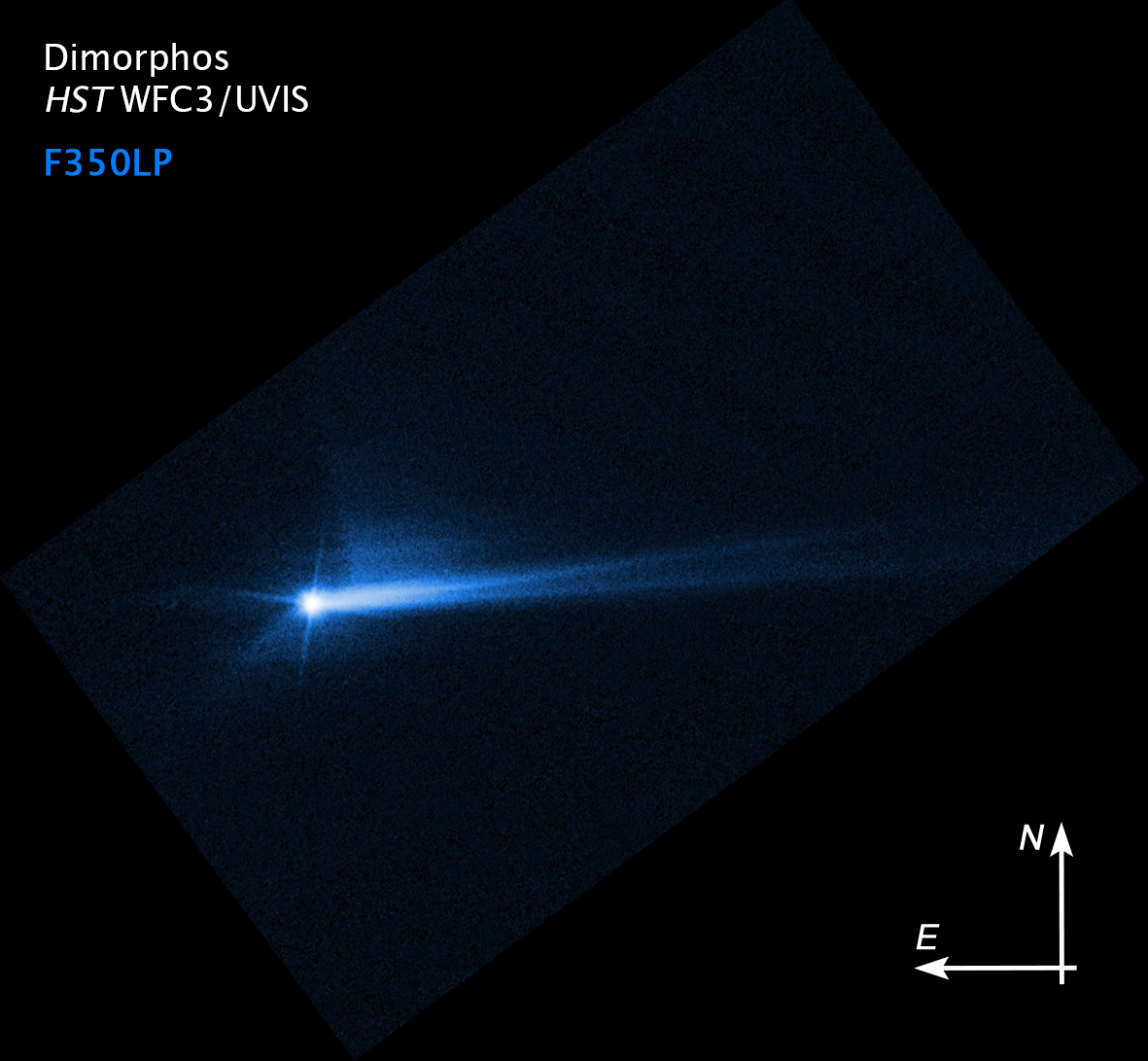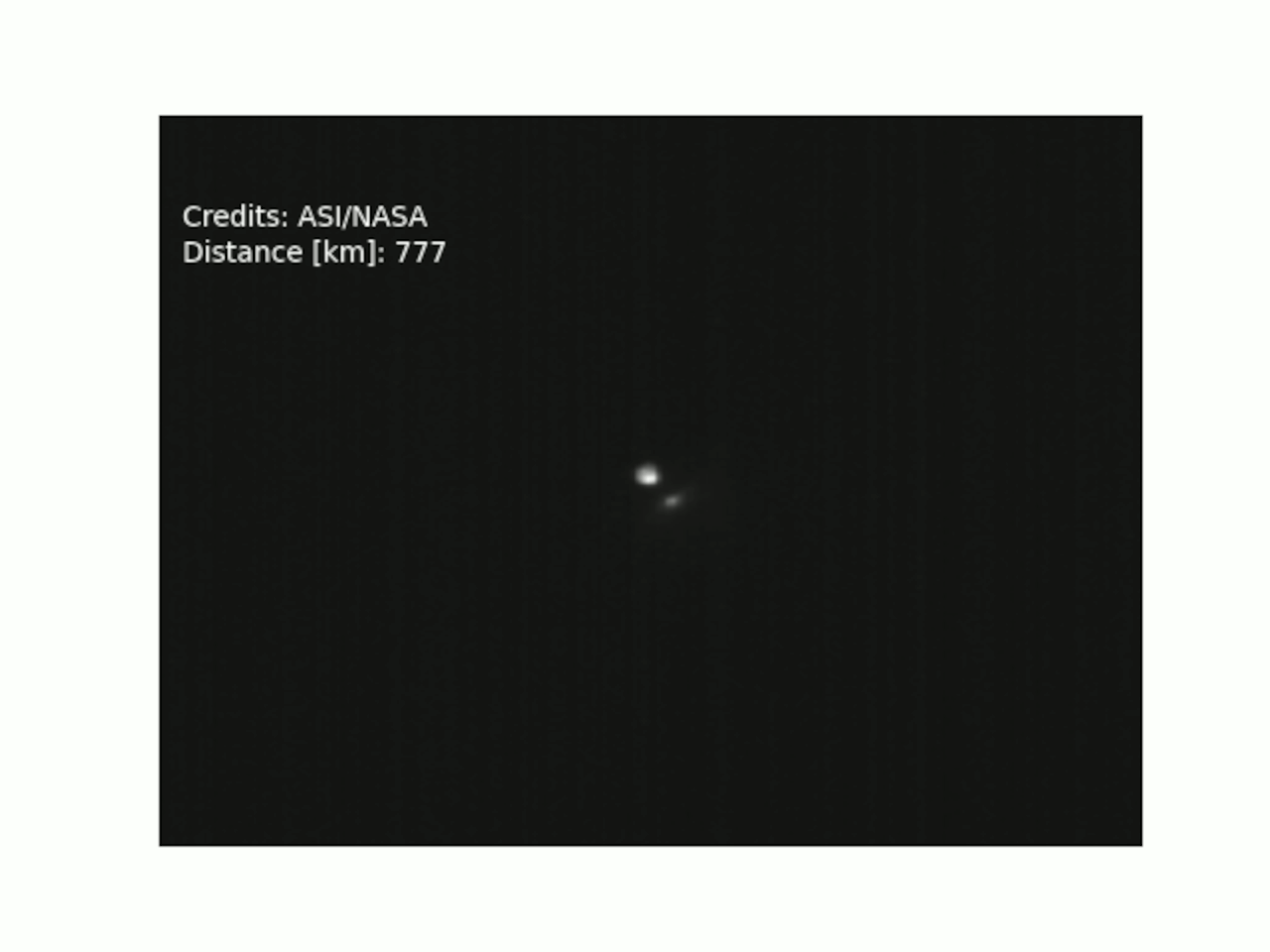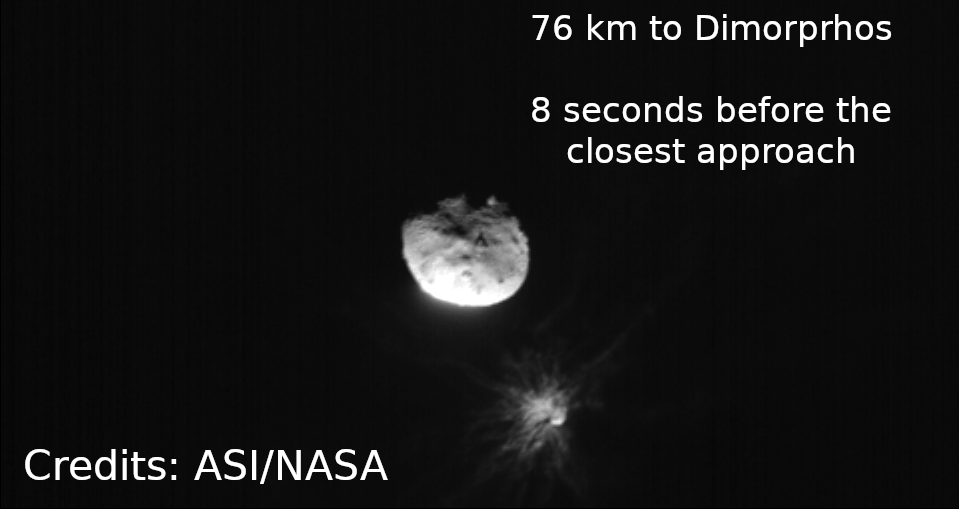The collision of the DART probe with the Dimorphos asteroid led to a change in the orbital period of the small body by 32 minutes. This is much more than the computer models suggested.

The main objective of the DART mission was to test the possibility of changing the orbit of a celestial body threatening the Earth by kinetic action. Its target was the 170-meter asteroid Dimorphos, which is a moon of the larger asteroid Didymos.
DART crashed into Dimorphos on September 27. The collision and its consequences were monitored by both the LICIACube cubesat, which had separated from the probe in advance, and a number of ground-based and space observatories. They recorded a large release of matter, thanks to which the asteroid acquired a comet-like tail, with a length of 10 thousand km.
Computer models created before the collision predicted that the impact should lead to a change in the Dimorphos’s rotation period by 4 to 7 minutes with a minimum allowable value of 73 seconds (with a lower indicator, the mission would be considered unsuccessful). However, the results of observations showed that DART far exceeded these indicators. The initial period of the Dimorphos’s circulation was 11 hours and 55 minutes. After the impact, it decreased to 11 hours 23 minutes (with a measurement error of 2 minutes). Thus, DART significantly exceeded the original plan.

Despite the fact that scientists are still continuing to analyze the data collected during the experiment, it can already be said that the kinetic impact method turned out to be much more effective than expected. This is good news, which means that it can be an effective tool for dealing with dangerous celestial bodies.

It is also worth noting that the Italian Space Agency has published new images obtained by LICIACube during the flight of Didymos and Dimorphos. They demonstrate the consequences of a collision in the form of a plume of ejected matter surrounding a small body.
According to https://www.nasa.gov
Follow us on Twitter to get the most interesting space news in time
https://twitter.com/ust_magazine
